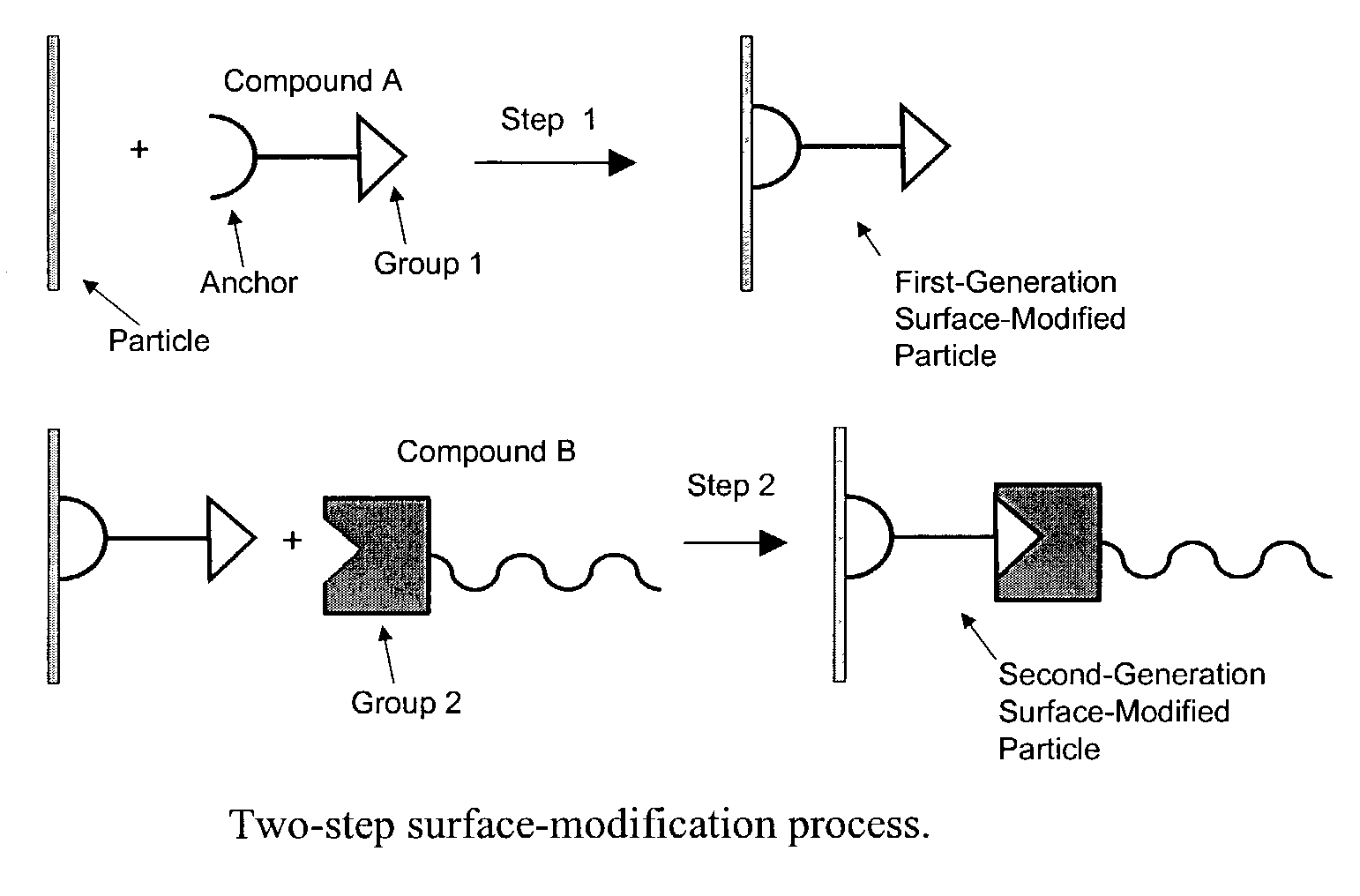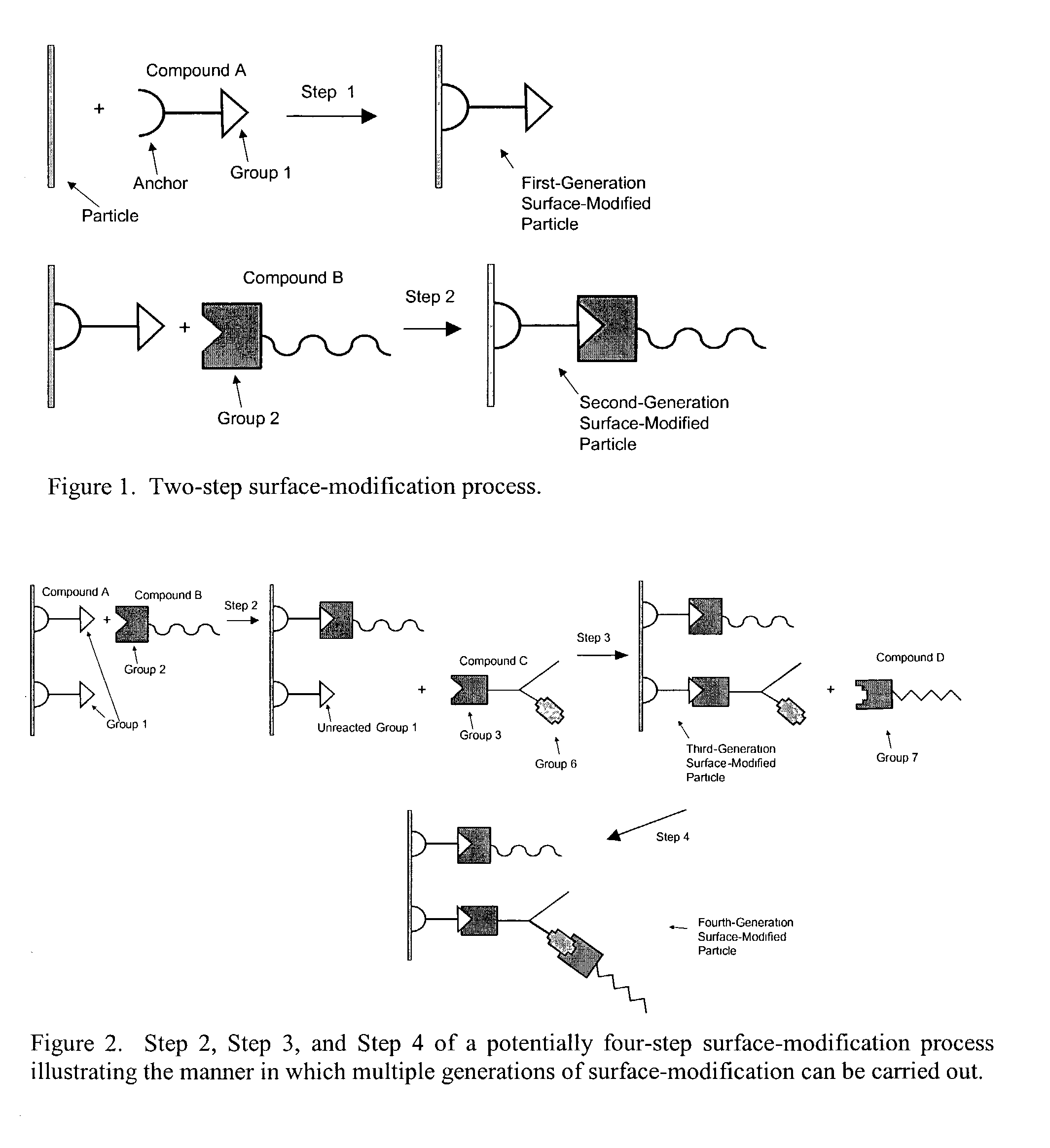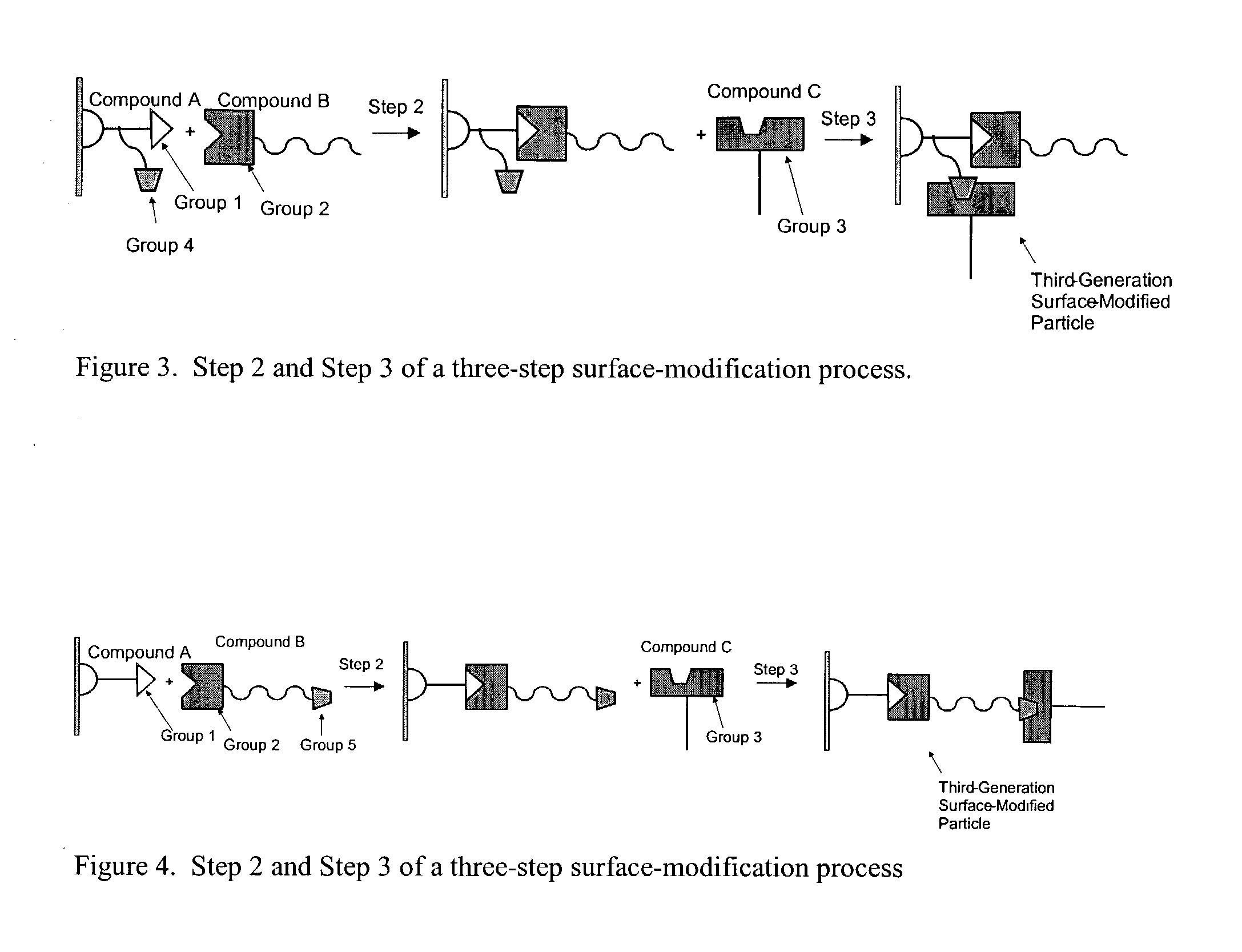Surface modified particles by multi-step addition and process for the preparation thereof
a technology of surface modification and additives, applied in the field of surface modification particles, can solve the problems of limited chemistries available for modifying the surface of a particle in a single step, limiting the rate of production of surface-modified clays, and limiting the production rate of some surface-modified clays
- Summary
- Abstract
- Description
- Claims
- Application Information
AI Technical Summary
Benefits of technology
Problems solved by technology
Method used
Image
Examples
example 1
[0064]In a 3 L round bottom flask equipped with an overhead mechanical stirrer and a reflux condenser, 200 g (2.8 mol Al) of boehmite with a BET surface area of over 200 m2 / g (e.g. Catapal A from Sasol) was slurried in 1 L of water. To this was slowly added 95 g (0.475 mol) of 3-iodopropionic acid while stirring vigorously, adding additional water as necessary to maintain a low enough viscosity to ensure good mixing. This mixture was heated to 80° C. for 18 hours at ambient pressure. To this warm mixture 1 L of an ethanol solution containing 20% of a polyoxyalkyleneamine (e.g. XTJ-507 from Huntsman) was added. This ethanol solution was added while stirring and the temperature was maintained at 90° C. for another 16 hours. The product was then dried to a waxy solid, and is useful for improving the barrier properties of poly(lactic acid).
[0065]For example, poly(lactic acid) composites composed of poly(lactic acid) and the above surface-modified particles were mixed together in a Brabe...
example 2
[0067]As illustrated in Scheme 3, acrylic acid (25.7 g, 0.36 mol) was added to 1.5 L of an 80° C. aqueous slurry containing 154.3 g (2.17 mol Al) of boehmite with a BET surface area of over 200 m2 / g (e.g. Catapal A from Sasol). This mixture was heated at 80° C. for 20 hours and then spray-dried in a Yamato Pulvis Model GB-21 spray drier. It can be advantageous to convert the material to a dry powder to aid in transportation, storage, and handling. The dry material (15 g) was dispersed in 100 mL of water by gentle agitation. To this was added 9.8 g of liquid polyoxyalkyleneamine (XTJ-507 from Huntsman, 5 mmol) dispersed in about 100 ml of ethanol. After 40 minutes of stirring, the material was dried to a solid in a convection oven near room temperature. This dried material was then dispersed in acetone and 0.59 g (10 mmol) ethylene diamine was added to the solution. After 1 hour of stirring, 2.3 g (10 mmol) of HELOXY modifier 65 (a mono-functional glycidyl ether) was added while stir...
example 3
[0070]This example illustrates first the conversion of the surface of alumina particles to boehmite, followed by modification of this surface with organic compounds.
[0071]In a 2 L pressure vessel provided with a mechanical stirrer, calcined α-alumina powder having an average particle size of 0.2 μm (RC-HP DBM without MgO alumina from Baikowski Malakoff) (500 g) was mixed with de-ionized water (1.3 L) and 30% wt. ammonia solution (237 g) in order to facilitate a hydrothermal treatment of the alumina surface. The reaction was heated at 190° C. for 25–50 hr under vigorous stirring. At this temperature the internal pressure was about 300–350 psi. After cooling, the samples were dried in a vented oven at 9° C. overnight. The pH of the treated alumina in water was neutral, suggesting that all the ammonia evaporated during drying. This step forms a boehmite layer on the surface of the alumina as demonstrated by the x-ray diffraction pattern of the product.
[0072]All of the hydrothermally-tr...
PUM
| Property | Measurement | Unit |
|---|---|---|
| particle size | aaaaa | aaaaa |
| heat distortion temperature | aaaaa | aaaaa |
| temperatures | aaaaa | aaaaa |
Abstract
Description
Claims
Application Information
 Login to View More
Login to View More - R&D
- Intellectual Property
- Life Sciences
- Materials
- Tech Scout
- Unparalleled Data Quality
- Higher Quality Content
- 60% Fewer Hallucinations
Browse by: Latest US Patents, China's latest patents, Technical Efficacy Thesaurus, Application Domain, Technology Topic, Popular Technical Reports.
© 2025 PatSnap. All rights reserved.Legal|Privacy policy|Modern Slavery Act Transparency Statement|Sitemap|About US| Contact US: help@patsnap.com



